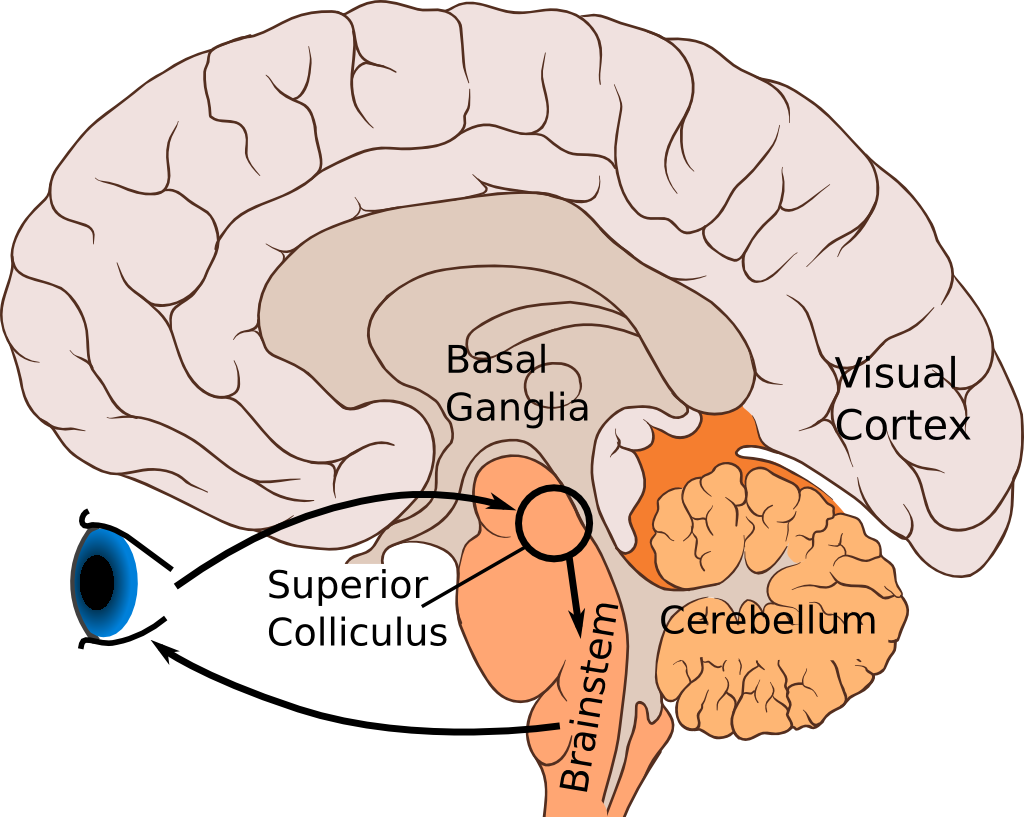Answer: The superior colliculus is a midbrain structure involved in visual attention processing.
The structures of the midbrain can be divided into two main regions, the tectum and the tegmentum. They are both surrounding the brainstem. Part of the tectum is the colliculus, which itself is divided into the superior and inferior colliculus.
Anatomically, the superior colliculus resembles a bulge on the posterior surface of the brain stem. The colliculus is a paired structure, so we have one on each hemisphere. The word "colliculus" is singular; "colliculi" is plural.
The superior colliculus receives inputs from two main areas. The upper layer receives primarily visual information originating from the retina, specifically the output cells called the retinal ganglion cells as a branch of the optic nerve. These projections run into the superficial layers of the superior colliculus, more accurately called Layer III or stratum opticum.
The lower layers receive inputs from other sense organs, such as the auditory and somatosensory systems. Primary motor, primary sensory, and association cortices send their axonal projections into the intermediate and deep layers of the superior colliculus. Additionally, the substantia nigra pars reticulata of the basal ganglia also send projections here.
Because the superior colliculus receives inputs from several sensory systems, one of its functions is for multisensory integration. The superior colliculus helps the organism with head and eye muscle movements so that they are able to bring their focus to objects of interest in the world around them.
Non-mammals, such as birds and fish, have an analogous structure called the optic tectum. In many non-mammals, the optic tectum makes up a large percentage of the brain. For these animals, the optic tectum also functions to help coordinate visual stimuli with motor activity. The optic tectum helps frogs target their tongue lashes against flies, and helps snakes figure out the direction of biting.
